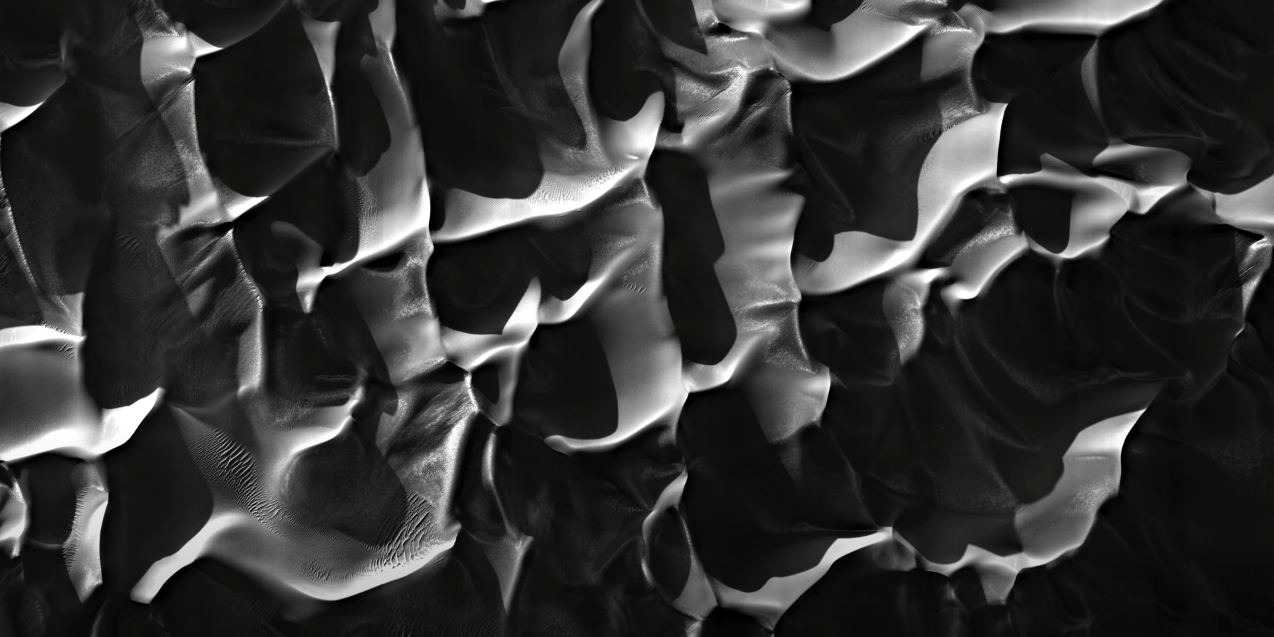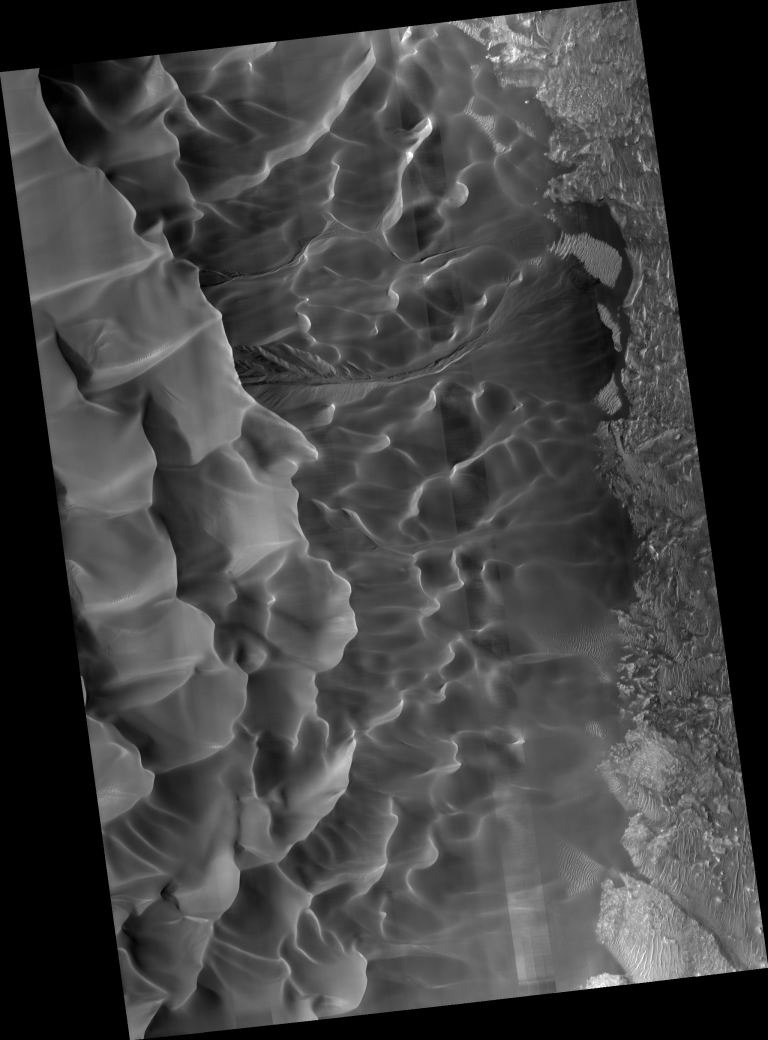NASA has unveiled a new video that reveals the ghostly beauty of the Matara crater, one of the many craters on the surface of Mars, which was named after the city of the same name on the island of Sri Lanka. The video was captured using the HiRISE camera, which is installed on the Mars Reconnaissance Orbiter (MRO) from NASA. The images that make up this video were taken from an altitude of 251 km above the surface of Mars.
Matara crater has a diameter of about 48 km. But it attracts attention with its dunes and wavy, textured nature. A massive layer of sand prevails at the bottom of the Matara crater. The constant wind on Mars turns the upper part of the sandy surface into dunes, and the HiRISE camera documents these changes in detail over time. The HiRISE website contains over 100 images of dunes in the area.
The dunes in Matara crater undergo changes with the change of seasons. Freezing and thawing of carbon dioxide lead to changes in the structure of the dunes. A few years ago, HiRISE employees already captured these changes in a separate video.

NASA created and launched the HiRISE instrument into orbit around Mars on board the Mars Reconnaissance Orbiter not only to create beautiful photos of dunes. Dunes can reveal many secrets about the planet’s past. The different sizes of dust in the dunes provide scientists with information about the atmospheric conditions in which they settled. The dunes also contain information about the forces active since their formation. Together with other scientific observations of Mars, they help to form an overall picture of the history of this planet.
The greatest mystery of Mars
Some dunes even help us understand one of the biggest problems of Mars: what happened to its water. The Chinese rover Zhurong found evidence in the sand dunes near the equator of Mars that liquid water flowed there only 400 thousand years ago — this is almost recently.

Sand dunes are intriguing targets for rover exploration, but they are difficult to navigate and dangerous for wheeled vehicles. NASA’s Spirit rover got stuck in the sand in 2010, and its mission ended. Scientists are busy working on other methods of transportation for rovers that can overcome sand dunes without wheels. Instead, these rovers will have bodies rolling over the sand. One of the projects is based on the spider Carparachne aureoflava from the Namib desert. It is known for its ability to roll with the help of the wind, which helps it to overcome the dunes more easily. The company FESTO has developed a prototype of a rolling robot based on the ability of a desert spider — it is called BionicWheelBot.
Perhaps moving robots will never visit Matara crater to explore its dunes. But at least we have a maintenance system and a HiRISE camera. Thanks to them, as well as the quality of 4K video, we can dream about going there ourselves.
Earlier we reported on how a bear’s face was spotted on Mars.
According to uahirise.org
Follow us on Twitter to get the most interesting space news in time
https://twitter.com/ust_magazine
